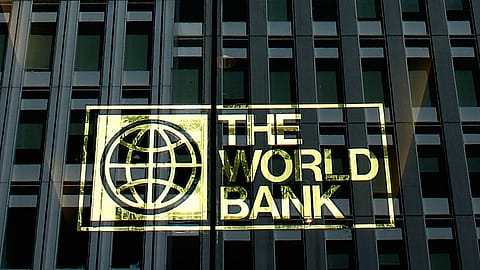World Bank approves $800 million loan for Andhra's capital city project
The project aims to establish the city as a well-managed, climate-resilient growth centre in Andhra Pradesh that generates jobs and improves the lives of its current and future residents

The World Bank (WB) has sanctioned $800 million to support the first phase of the Amaravati Integrated Urban Development Programme, the dream state capital project of Andhra Pradesh Chief Minister N Chandrababu Naidu. The government has prepared an Amaravati masterplan for a 217 sq km area that can accommodate 3.5 million people by 2050.
The project aims to establish the city as a well-managed, climate-resilient growth centre in Andhra Pradesh that generates jobs and improves the lives of its current and future residents, especially the most vulnerable.
“With its urban population expected to double to 950 million by 2050, India aims to build sustainable and livable cities as growth hubs, and Amaravati offers an exciting opportunity to model this urban transformation,” said Auguste Tano Kouame, the World Bank’s Country Director for India.
“The World Bank will bring global expertise to support the design of city institutions and infrastructure that can create economic opportunities for residents, including women, youth and vulnerable groups.”
The World Bank financing aims to catalyse more than $600 million in private sector investment so that the city can generate new jobs and economic opportunities for its residents. The government estimates that Amaravati can potentially create 50,000 jobs over the next five years in sectors like construction, agro-processing, clean manufacturing, and services.
Under the integrated urban development programme, Amaravati will see the development of climate-resilient infrastructure, including a 320-km arterial road grid served by low-carbon transport, 1,280 km of neighbourhood roads, ducts for power and telecommunication connectivity, and city-wide systems for water supply, wastewater and stormwater drainage.
The programme will design a flood management system to help the city withstand future flooding risks. This will include nature-based solutions, reserving 30 % of land as open spaces, creating retention reservoirs, and constructing robust flood protection infrastructure, along with early warning systems.
Recommended Stories
The programme has been developed based on consultations with a range of stakeholders, including local communities, as well as lessons from the World Bank’s engagement in the urban sector globally and in India.
Of the $1.78 billion estimated expenditure for the first phase of the development project, $800 million will come from the World Bank and $788.8 million as a loan from the Asian Development Bank. The World Bank loan will have a final maturity of 29 years, including a grace period of six years.